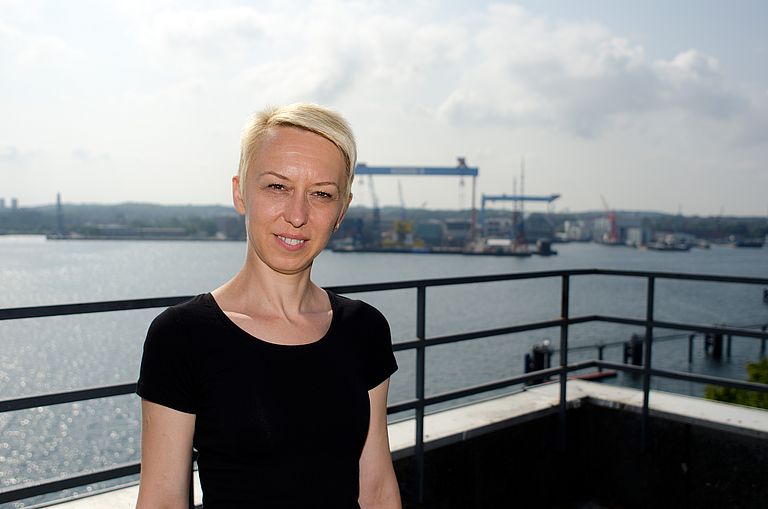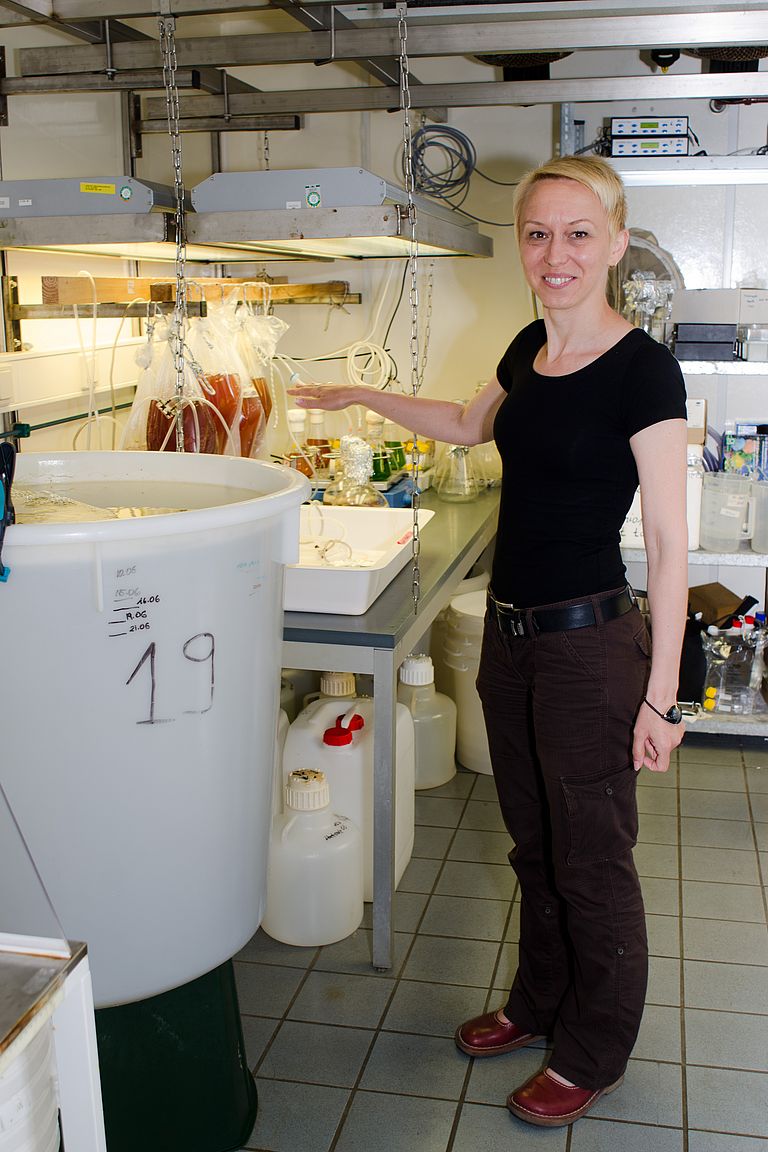Where do the most successful invaders come from?
Dr. Elizabeta Briski has founded a research group at GEOMAR with a Sofia Kovalevskaya Award of the Humboldt Foundation
At first glance, the 4 to 10 inches long round goby is a rather inconspicuous fish. However, the species is a highly successful conqueror. It originates from the Ponto-Caspian area, i.e. the Black, Caspian and Azov Seas. Along canals and rivers it spread to the coasts of the North and Baltic Seas. In 1990 biologists discovered it for the first time in the Great Lakes of North America. Since then, round goby reproduces very successfully - partly at the expense of native species. Just as round goby, numerous species from the Ponto-Caspian region have colonized the areas of the Northern Europe and North America. Conversely, the number of successful invaders from North America is low. Are species from the Ponto-Caspian area genetically better prepared to conquer other ecosystems than species from other regions of the world? And if so, why?
The Croatian/Canadian scientist Elizabeta Briski wants to answer these questions. Now she has been awarded the Sofja Kovalevskaya Award of the Alexander von Humboldt Foundation, which is endowed with about 1.6 million euro. With the funding Dr. Briski can build her own junior research group at a German research institution of her choice. She selected GEOMAR Helmholtz Centre for Ocean Research Kiel. “I have previously worked with colleagues from Germany and met Professor Ulrich Sommer at ASLO Conference in Canada,” says Dr. Briski, “so I knew that his research unit at GEOMAR offers excellent conditions for my work.”
The scientific career of Dr. Briski began as an agriculture student in Zagreb (Croatia). After a Master's degree at the University of Ghent (Belgium), she moved to Canada for her PhD at the University of Windsor, where she has examined the community dynamics of taxa during transportation stage of the invasion process. She then worked for three years in Department of Fisheries and Oceans in the Government of Canada. "Now, with the questions that I want to answer which connect Europe, Asia and North America, I have decided to return to Europe," says Dr. Briski.
For five years she will pursue her research questions from Kiel. The group she currently is building up will consist of a technician, two PhD-students and two postdoctoral fellows. “The first task will be to check whether actually invaders from the South-eastern Europe and Western Asia are more successful invaders than those from the Northern Europe or North America. This includes a lot of literature studies and statistics, "says the biologist.
In a second phase, experiments with organisms from the Ponto-Caspian region, North and Baltic Seas and North America are planned to test and compare the resilience of the species from different regions towards environmental changes. These experiments will also consider chemical and physical features of the three study areas. "At the end, we hope to better understand why certain species are successful as invaders and others are not. This knowledge can also help to better control particularly aggressive invaders," says Dr. Briski.
High-res photos:
Dr. Elizabta Briski at GEOMAR. Photo: J. Steffen, GEOMAR.
Dr. Elizabta Briski in the lab. Photo: J. Steffen, GEOMAR.
Contact:
Jan Steffen (GEOMAR, Communication & Media), Phone: (+49) 0431 600-2811, jsteffen(at)geomar.de




